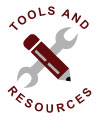Start the conversation

-
Find out if others are working on trafficking issues in your sector:
- Start with a few interested people in your organization and/or sector.
- Bring the issue up, share your thoughts and concerns.
- Address the issues that touch your line of work:
- How would trafficking show up in your day-to-day work?
- Do you serve a group(s) that may be vulnerable to exploitation or trafficking?
- For example: newcomers, migrant workers (temporary foreign workers, live-in caregivers), women, youth, victims of sexual violence, etc.
- Set a plan to clarify your organization’s objectives and main concerns relating to trafficking.
- Set regular meeting times to discuss the issue – be consistent and committed.
- Stay informed!
- Keep yourself educated: build your knowledge through workshops, online training programs and webinars.
- Stay up to date through different media.
Stay connected with anti-trafficking organizations through:
Staying informed
> Social media
> Electronic newsletters on trafficking issues
- Educate others in your organization and/or sector:
- Explore connections and possible actions you can do within your field.
- Exchange information and education.
- Reach out to your colleagues and professional networks.
- Network with other groups and social service agencies:
- Find out what they are doing to address trafficking.
- Find ways to work together and share resources.
- Find out who can provide support to trafficked persons:
- Who can respond to a crisis and what will happen if they help?
- Is there already a response and referral protocol in place?
- Get in touch with the CCR pan-Canadian anti-trafficking network.
- Support initiatives that advocate for:
- Measures that adequately protect the rights of trafficked persons in Canada:
- Just immigration policies and safe paths of migration.

Useful tools
To raise awareness, share and increase knowledge within your organization, sector and network:
Learn more about the nature and extent of trafficking in Canada and abroad
Human Trafficking: Canada Is Not Immune Online Training Program
BC Office to Combat Trafficking in Persons (OCTIP)
 This online course consists of 4 modules to train Canadian service providers working in different fields where they may be likely to come into contact with a trafficked person in the course of their work. It also provides useful information for anyone interested in learning more about the issue in a Canadian context.
This online course consists of 4 modules to train Canadian service providers working in different fields where they may be likely to come into contact with a trafficked person in the course of their work. It also provides useful information for anyone interested in learning more about the issue in a Canadian context.
For organizations and service providers, the training is relevant regardless of the type of service provided as it aims to create an understanding of:
- The definitions of trafficking in persons;
- The scope of international and domestic trafficking within the Canadian context;
- Laws and policies related to trafficking in persons;
- How to recognize a possible situation of trafficking;
- How to support trafficked persons and make appropriate referrals to the required or requested services.
This course takes up to 5 - 7 hours to complete and can be taken at your own pace.

Videos
Avenue Zero (documentary)
Human Trafficking of Youth in Canada PSA, ACT Alberta
Learn about the signs of possible trafficking situations
Delphi Indicators
International Labour Organization (ILO) – European Commission
The Delphi Indicators offer 4 sets of operational indicators that can be used to examine a potential situation of trafficking of adults and children for both labour and sexual exploitation.
Why are the Delphi Indicators useful?
The definition of trafficking in persons offered by both the Trafficking Protocol and Canada’s Criminal Code is too broad, leaving some elements undefined. This affects how the concept of trafficking is understood and how potential victims are identified. The Delphi Indicators are useful because they offer specific examples to better guide those who work with or who may encounter trafficked persons on a day-to-day basis.
Human Trafficking Indicators
United Nations Office on Drugs and Crime (UNODC)
This pamphlet provides another list of signs indicating that a person may have been in a situation involving trafficking, including:
- General indicators
- Indicators of child trafficking
- Trafficking for the purpose of domestic servitude,
- Trafficking for sexual exploitation
- Trafficking for labour exploitation (work in agriculture, construction, entertainment, service industry, manufacturing, etc.)
- Trafficking for the purpose of begging and/or committing petty crime
Learn about the different roles people can play: What is your role?
Depending on your profession, you can play a specific role in raising awareness about trafficking. Here are some tools developed to reach specific groups.
Health workers
As a health care provider, trafficking in persons represents a serious health risk because of the physical and psychological harm induced at different points of a person’s experience. Health care providers can play an important role as the first point of contact of some trafficked persons by:
- Identifying potential situations of trafficking;
- Treating and assisting trafficked persons;
- Raising awareness about the health consequences of trafficking and the importance of policies that protect survivors of trafficking by facilitating access to health care and support services for all trafficked persons.
Caring for Trafficked Persons: Guidance for Health Providers Facilitator’s Guide
International Organization for Migration (IOM) and the Gender Violence & Health Centre of the London School of Hygiene & Tropical Medicine (LSHTM), 2012
This training package is based on the handbook Caring for Trafficked Persons: Guidance for Health Providers (2009) developed to teach health care providers of all types and levels about trafficking in persons. The package includes material to train health care providers by creating an understanding of:
- Trafficking in persons and major health consequences of trafficking;
- How to handle a suspected case;
- How to care for a referred trafficked person.
Work with children and youth
Reaching out to children and youth is an important part of awareness-raising on trafficking. This can include explaining the process leading to and involving trafficking of youth in Canada, including:
- Recruitment methods by traffickers;
- Practices that promote isolation;
- Control tactics and forms of exploitation.
Human Trafficking of Youth in Canada PSA
ACT Alberta (2012)
Human trafficking also happens to youth in Canada. This video shows three human trafficking scenarios youth in Canada may be susceptible to:
- Dubious modelling opportunities abroad and within Canada (among other work opportunities);
- Coming to Canada for a better life in the hands of a relative or friend to only be used for labour exploitation;
- The "Prince Charming" scenario where men prey on young girls by showering them with affection only to manipulate them into working in the sex trade.
Youth resources
Royal Canadian Mounted Police (RCMP)
- Youth Booklet: explains the process of recruitment, isolation and control specifically to enable trafficking for sexual exploitation.
- Youth Posters: provide basic contact information to report suspected cases of trafficking.
- Parent Help Sheet: offers parents a list of possible indicators including attitudes, behaviors and/or physical signs of abuse that could point to possible situations of child or youth trafficking for sexual exploitation purposes.
Getting youth involved in outreach efforts is a great way to encourage and build further youth engagement and awareness-raising. Children and youth can be involved in:
- Campaigns to promote social justice and rights protection for trafficked persons;
- Spreading the word through social media;
- Speaking up through other media: creating art, theatre, videos and music around issues faced by trafficked persons.
Businesses
Engaging businesses against trafficking is important as their business operations can positively and negatively affect the human and labour rights of people around the world. Human trafficking and exploitation can take place throughout different levels, including:
- At the workplace;
- Through recruitment;
- In communities of operation;
- In business supply chains.
Raising awareness among businesses, as well as business associations and industry representatives can be key in addressing practices and policies that render workers vulnerable to exploitation.
Human Trafficking and Business: An eLearning course on how to prevent and combat human trafficking
UN.GIFT, 2010
This handbook is part of the eLearning course on human trafficking targeted to business leaders, managers and employees of business companies. The course consists of 3 modules that train the private sector on:
- What human trafficking is;
- Why human trafficking is an issue for business;
- What business can do to address human trafficking.
The e-learning course can be requested by contacting un.gift@unvienna.org.
Trucking industry and frequent travellers
The trucking industry is another point of contact with a strong potential for detecting and reporting trafficking in persons. Raising awareness among truckers and frequent travellers has proved to be an important way to keep an eye on possible situations of trafficking throughout Canada’s main transport routes.
TruckSTOP Campaign and Resources
PACT-Ottawa
 The TruckSTOP Campaign is an awareness initiative launched by PACT-Ottawa. It is directed towards members of the trucking industry and frequent travellers and has developed tools to equip them with the necessary knowledge to identify suspected cases of trafficking in persons and alert law enforcement.
The TruckSTOP Campaign is an awareness initiative launched by PACT-Ottawa. It is directed towards members of the trucking industry and frequent travellers and has developed tools to equip them with the necessary knowledge to identify suspected cases of trafficking in persons and alert law enforcement.
The campaign offers materials such as audio CDs, wallet cards, beverage coasters and posters available free of charge.
| Previous page |
